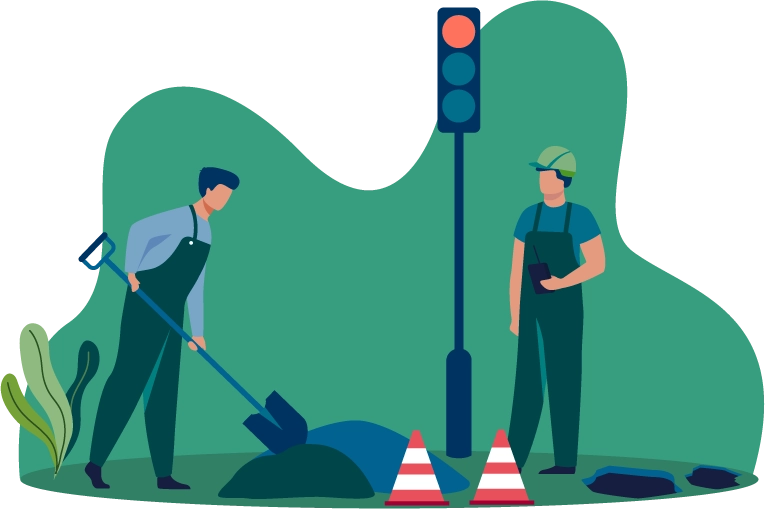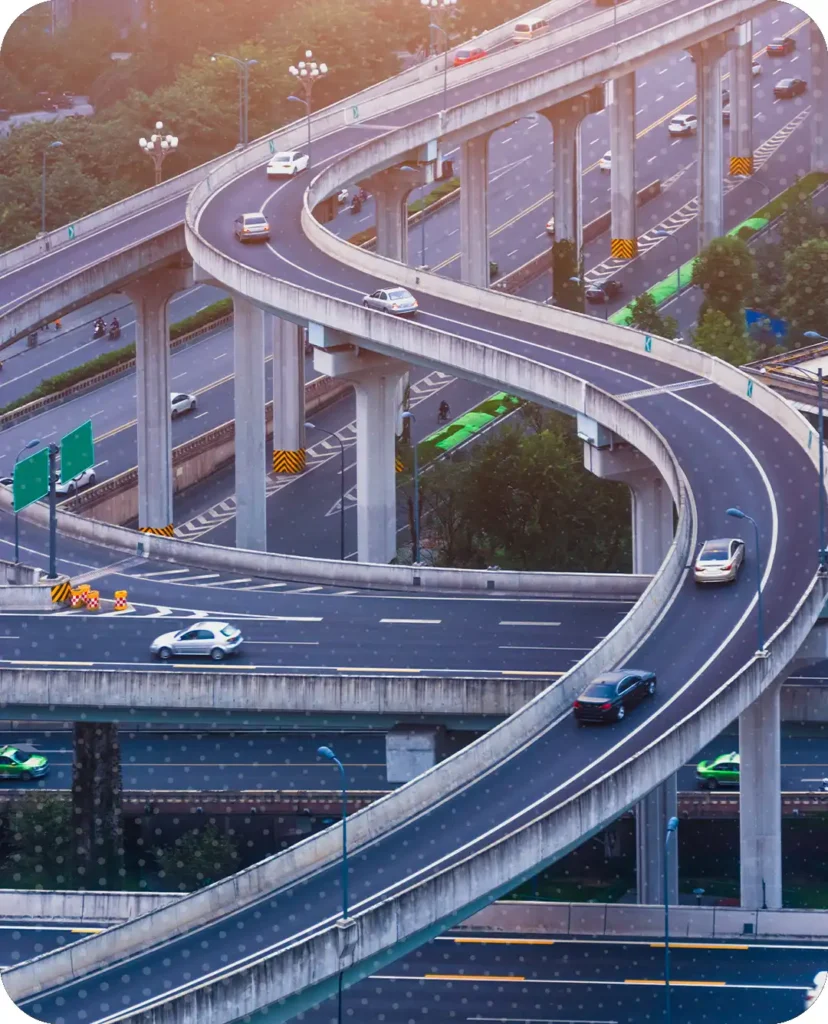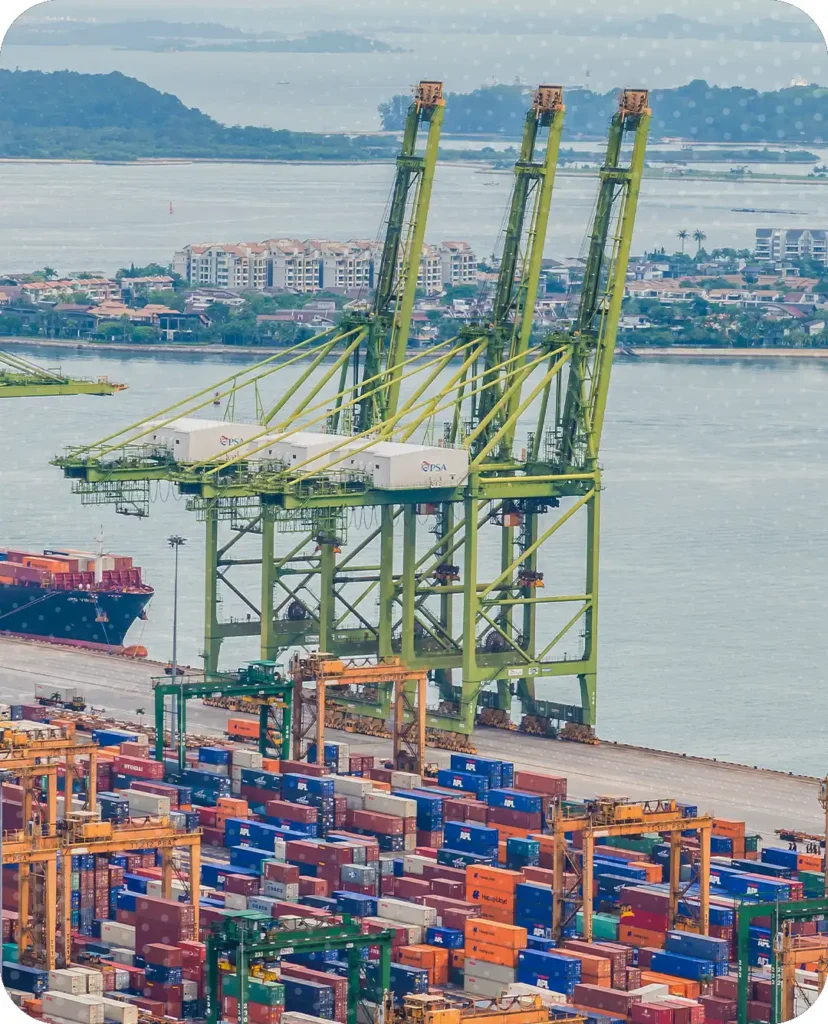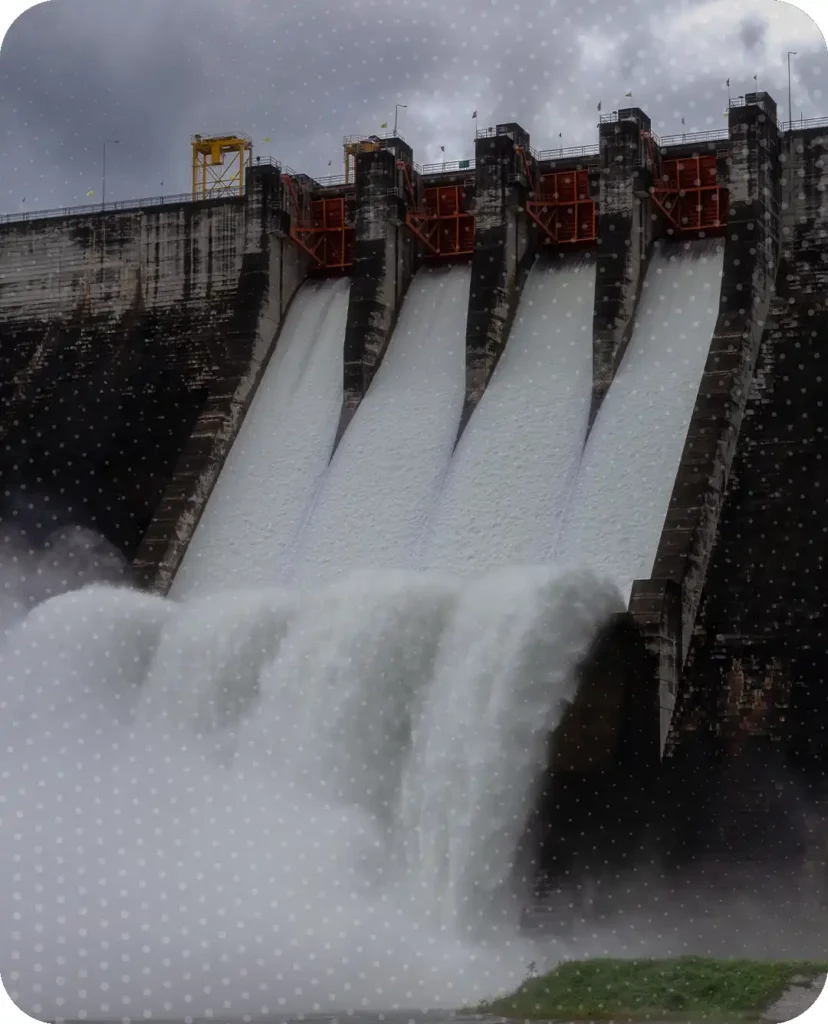Geometric design

Components we apply in the geometric design of linear works
Horizontal Alignment
We define the alignment of the linear work through combinations of elements such as straight lines, circular curves, and clothoids.
Vertical Alignment
We establish and dimension the proposed alignment. The vertical alignment determines the elevation profile of the design, defined by straight and parabolic elements to ensure smooth grade transitions and optimal performance.
Cross section
We define variations in superelevation, pavement structure layers, and the segmentation of cross sections with their corresponding transitions to ensure accuracy and constructability.
Enhance the efficiency and precision of your infrastructure projects with geometric design!

Fields of Application for Geometric Design

Highways and roads
We understand the importance of efficiency and safety in road construction. With our BIM methodology, we can develop comfortable, functional, and safe roads that adapt carefully to the environment. Our digital model allows for the solution of different geographical challenges, such as the construction of viaducts, bridges, and tunnels, to ensure the continuity of roads in rugged environments.
Railway
Designing railway lines is a complex process that requires strict adherence to regulatory parameters. In this sense, the layout of railway lines seeks to minimize uncompensated positive accelerations, as well as the longitudinal slope of the route, to achieve tracks where trains can travel at high speed under optimal conditions of comfort, energy, and safety.


Maritime infrastructure
Maritime projects are complex because they are at the boundary between the terrestrial and maritime systems. On one hand, topography is the reference for the land side, while on the maritime side, it's bathymetry and tidal height changes. These projects may require the development of coastal roads, tsunami protection embankments, desalination plants, port docks, and even the urbanization of part of the seabed with artificial beaches.
Dams
The geometry of a dam follows a process similar to that of roadway, railway, or maritime projects, as it involves an extruded cross-section along a defined axis and grade line. This typically includes interaction with topographic surfaces, such as embankments in railway works or fill materials in earth dams.

Blog Recientes
Frequently asked questions
How can BIM methodology be applied to the geometric design of roads and highways?
What criteria are important to consider in the design of curves in roads to ensure safety and prevent accidents?
To ensure safety and prevent accidents when designing curves in roads, several important criteria must be considered, such as the maximum design speed, curve radius, and superelevation.
The maximum design speed must be appropriate for the road conditions and user safety.
The curve radius must be sufficient for vehicles to pass comfortably without experiencing transverse accelerations that are uncomfortable for the user. Superelevation is the transverse elevation of the roadway in the curve, which helps counteract centrifugal forces and keep vehicles on the road.

